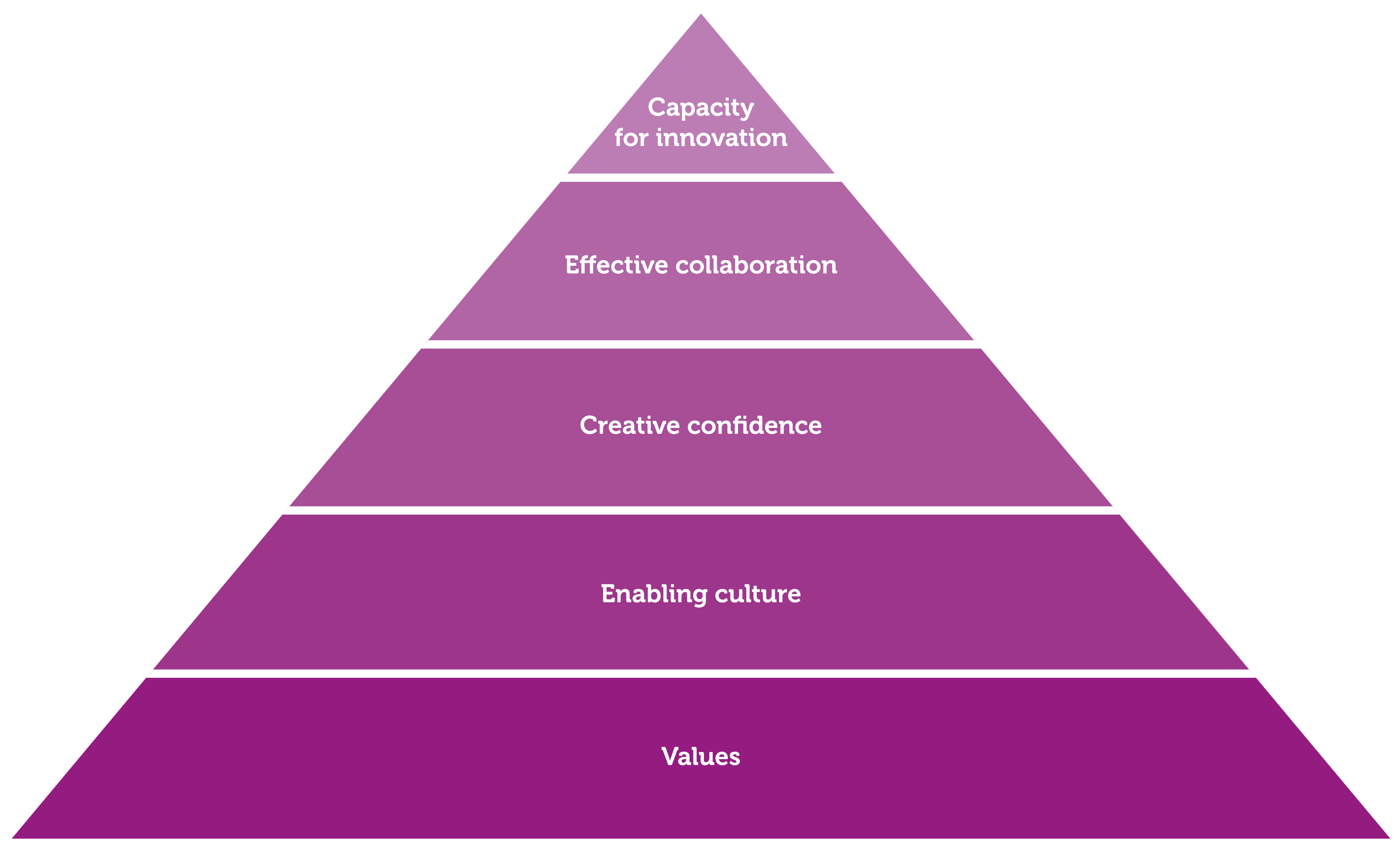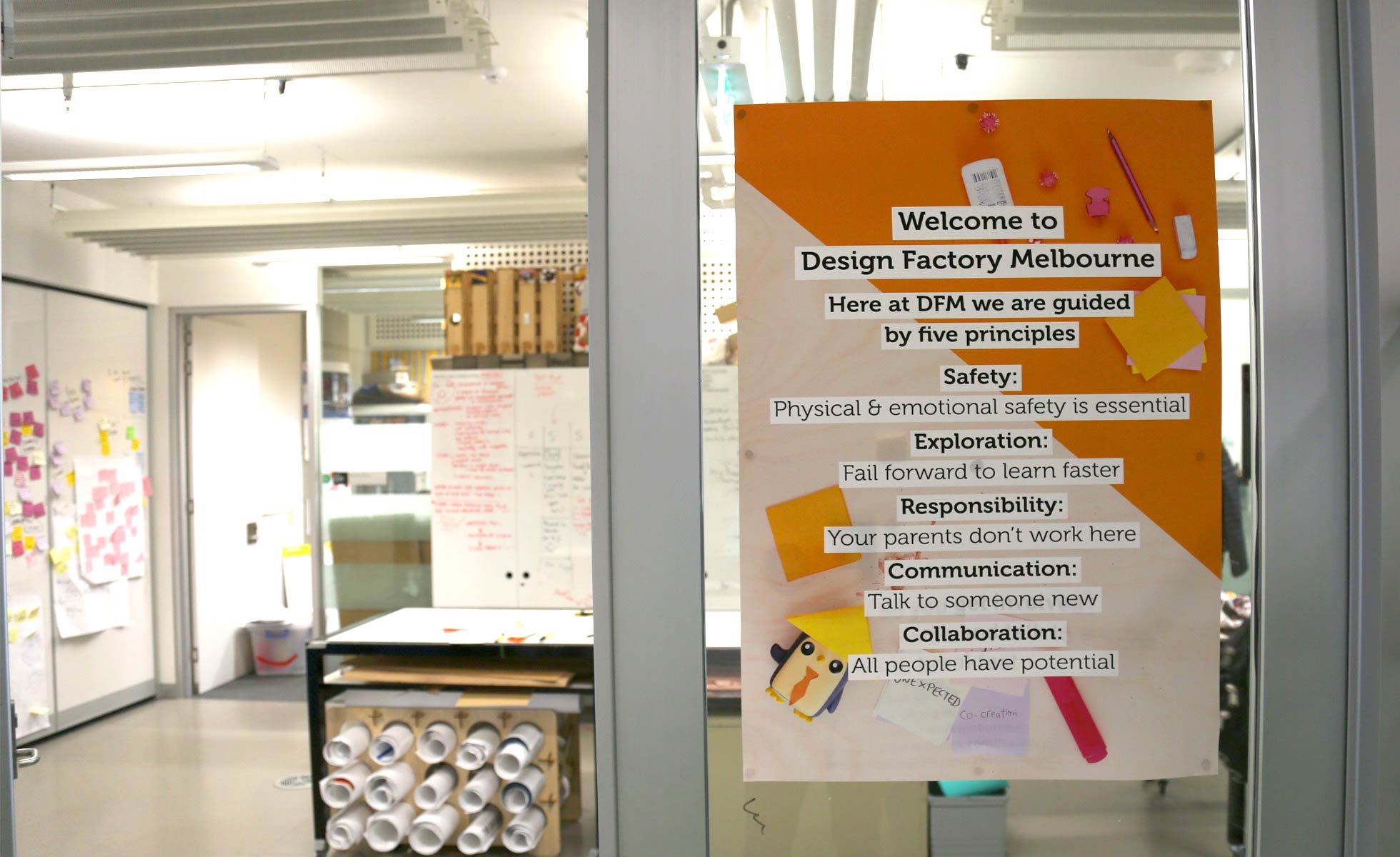PLATFORM April 2017
More than Innovations
Why you should look for university-industry collaborations that foster creative confidence.

Carl Turner Contributing Editor
This article was originally published in DFM’s 2017 PLATFORM series – a curated publication for leaders seeking to bring innovation into their business.
Rigorously researched and written by the DFM family, PLATFORM drew on our experience and expertise across industries, countries, and mindsets to bring you insights that you can action to drive your innovation and growth strategies.
We have all heard that innovation happens when industry and universities collaborate. But what really drives this innovation? Can culture and values foster creative confidence within individuals?
This month on Platform we’re going to unpack this sometimes confusing landscape to help you identify the right institutions to partner with for your innovation challenges.
Creative Confidence – the true engine of human prosperity
Australia has a strong history of impressive and impactful innovations – the black box flight recorder (1950s), the ultrasound scanner (1976), polymer banknotes (1988), Wi-Fi (1992), spray-on skin (1999) and the world’s first (cervical) cancer vaccine (2006), to name a few.
Each of these innovations were truly incredible. But are singular breakthroughs like these enough in the face of increasingly volatile, uncertain, complex and ambiguous futures?
Polymer bank notes, for example, were a great solution to counterfeit bank notes. Cyber security, however, is a much hairier beast. In fact, we may never find a precise solution to cyber security. Rather, it will be an ongoing process of learning and adaptation. It’s a similar story with interdependent issues in food, energy, water, health, climate, equality… These kinds of challenges need more than a series of isolated innovative products or services. Australia needs a deeper, systemic, capacity to be innovative, again and again, and again. This capacity is creative confidence.
The key to an enduring capacity for innovation.
Creative confidence is a term recently popularised by Tom Kelley & David Kelley [i] (of IDEO and Stanford’s d.school). They say, “at its core, creative confidence is about believing in your ability to create change in the world around you,” and that “belief in your creative capacity lies at the heart of innovation.”
Creative confidence is a key enabler of enduring capacity for innovation. Individuals with creative confidence increase potential for innovation because they are consistently willing and able to contribute effectively in collaborations. A key role of universities is to create the enabling conducive culture.

This raises three questions:
1. Why are universities in a unique position to build creative confidence, thereby enhancing Australia’s enduring capacity for innovation?
2. Why is creative confidence so important in university collaborations?
3. What kinds of values enable creative confidence to be built?
1. Why are Universities in a Unique Position to Build Creative Confidence?
Universities are ramping up efforts to engage with industry, government and community organisations, to help drive innovation. In recent years, there has been a proliferation of university-based startup accelerators, incubators and innovation precincts in Australia. Bigger initiatives are also underway, such as Tonsley innovation district, which is a partnership between the South Australian government, Flinders University and others.
Universities have a critical role to play in building Australia’s capacity for innovation. It’s not simply through knowledge or technology transfer, but also as ‘hubs’ that attract collaborators from industry, government and community. Australia’s culture of innovation has been identified as needing improvement [ii]. Universities can drive change by building creative confidence.
What’s important is that university engagements with industry/government/community are founded on values that drive cultures conducive to creative confidence. If collaborators take creative confidence with them back into their workplaces, then universities will have created meaningful impact through building enduring capacity for innovation.
“If collaborators take creative confidence with them back into their workplaces, then universities will have created meaningful impact through building enduring capacity for innovation.”
2. Why is Creative Confidence So Important in University Collaborations?
People with diverse backgrounds are attracted to universities. They come for the promise of gaining access to expertise, resources, new ideas and new thinking that can enable them to tackle new challenges and create innovative solutions.
Universities can be a great enabler for innovation as they have the ability to bring together minds from academia, industry, government, and the community.
But collaboration is not without its challenges, including:
· differing goals and priorities,
· unfamiliar ways of thinking and working [iii],
· having to question long-held assumptions,
· participation challenges owing to real or perceived power imbalances [iv],
· stress from managing the inherently ambiguous nature of innovation.
Such challenges often press emotional buttons. They directly affect an individual’s willingness and ability to shift their mindset and be innovative. The effect can be negative or positive, depending on the type of social environment created by the facilitator. Achieving the group’s potential for innovation requires an environment in which all individuals feel emotionally safe, and able to contribute openly, without fear [i, iii, v].
Furthermore, it’s important to recognise that creative confidence embodies a respect for the perspectives of others.
Universities have a critical role to play in building Australia’s capacity for innovation. It’s not simply through knowledge or technology transfer, but also as ‘hubs’ that attract collaborators from industry, government and community. Australia’s culture of innovation has been identified as needing improvement [ii]. Universities can drive change by building creative confidence.
What’s important is that university engagements with industry/government/community are founded on values that drive cultures conducive to creative confidence. If collaborators take creative confidence with them back into their workplaces, then universities will have created meaningful impact through building enduring capacity for innovation.
At DFM our values are clearly articulated and proudly placed on the front door.
3. What Kinds of Values Enable Creative Confidence to be Built?
Creative confidence is built where values of trust, low hierarchy and being open to new perspectives are embodied in everyday interactions. At Design Factory Melbourne (DFM), we believe all people are creative, all people have ideas and all people can contribute to innovation.
Our values are stated on our website, and on our front door:
- Safety: physical AND emotional safety is everything.
It ensures that stakeholders are comfortable to conduct research, collaborate, engage and negotiate around challenges. For industry partners DFM creates a safe place to experiment and co-create outside of the structures of their organisation. - Exploration: fail forward to learn faster.
Rapid exploration, iteration, and evaluation are only possible through a willingness to accept failure from time to time as an outcome. We learn from failure and, applying those learnings, can move forward with greater confidence. - Responsibility: your parents don’t work here
DFM maintains a flat hierarchy and a culture of mutual respect among all parties — everybody involved at DFM is responsible, independent, and accountable for their own involvement and participation in DFM. - Serendipity: talk to someone new
Every design factory is built around its kitchen; a space in which serendipitous meetings can happen. You could find yourself next to a CEO, new students or international visitors. Being open to talking to somebody new can create networks and opportunities that otherwise wouldn’t be possible. - Co-Creation: all people have potential
Where all people are considered to be valuable, diversity boosts the potential for innovation. Everybody has a unique point of view derived from their life experience, and when two different views intersect there is potential to spark innovation.
Are Clear Values Driving Your Creative Confidence and Innovation Capacity?
When looking for a University to partner with, it is important to look beyond process and seek an institute with clearly defined values that inform its innovation program.
For DFM, through living these values every day, we create an environment that drives innovative product and service concepts. We aim to change mindsets by building creative confidence in the people with whom we collaborate.
Enduring impact for Design Factory Melbourne occurs when our collaborators go on to use their creative confidence to enhance capacity for innovation. For students this may inform their career choices and see them leading innovation in emerging sectors; for industry partners this means taking the learnings back to their own workplaces and creating change within the corporate mindset.


